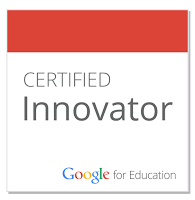Cheryl Oakes here, blogging for Wes Fryer as he vacations with his family! Thanks for the opportunity. I hope this post adds a challenge to many educators heading back to school for the 2010-11 school year.
We are all familiar with accessibility on our sidewalks, the curb cuts were designed to make sidewalks accessible for people using wheelchairs or crutches. In 1990, in the USA, theAmericans with Disability Act, required that curb cuts be in all sidewalks. While the intent was to make access available for anyone using a wheelchair the outcome has benefited everyone from joggers, children with tricycles, strollers and packages on wheels. Who knew? ( It has taken 30 years for curb cuts to be ubiquitous!)
Who wouldn’t want to have more successful students? If it doesn’t cost much, who could argue? Let’s stop putting road blocks up in our classrooms, take down the barriers and allow our students to be successful by looking at brain research, learning theory and some fairly easy modifications. Some of the best support for making curricula changes are the advancements, ease of use, and access to digital media for educators and students.
In 2004 Universal Design for Learning hit the airwaves. The Individuals with Disabilities Education Act of 2004 and the Higher Education Opportunity Act of 2008 have provisions for Universal Design and Universal Design for Learning. (Race to the Top also includes reference to Universal Design for Learning.) Similar to the Americans with Disability Act, this Act, was designed to benefit a few students, but has implications for the success of all students in our classrooms. Will it take 30 years for Universal Design for Learning to become ubiquitous?
Let’s look at some easy strategies and available resources to make this school year a differentiated and Universal accessible classroom for all. The best place to begin is with theCAST.org site and use their lesson builder after you watch their how to video. You can do this, your students will benefit. Without any scientific research for this, I am sure making these accessible changes in your classrooms, more of your students will meet standards.
You will need to become a FREE member at the Lesson Builder website of CAST.org . Once you do, you will have access to create your own UDL lesson. There are built in supports which will guide you through the design process. Challenge yourself and create one lesson based on UDL principles each week. You will see the differences in your students.
For your middle and high school students Strategy Tutor is a FREE web-based program designed to help with reading and research on the web. Check out this tool which your students can use on any computer, anywhere, anytime. As a bonus, there are resources for teachers with shared lessons and strategies.
For your grade 6-12 students there is a CAST.org support Science Writer which helps your students with their science labs and class reports. Using this online tool adds a text to speech toolbar to the webpage allowing audio access for your challenged learners.
Start your school year with a new mantra, Universal Design for Learning, for all learners.
Cross-posted at CherylOakes.com
Resources:
What is Universal Design for Learning?
Companion Website for the book, Teaching Every Student in the Digital Age: Universal Design for Learning
Companion Website for the book, Teaching Every Student in the Digital Age: Universal Design for Learning
Students say it all: thanks to Dr. Frances (Fran) G. Smith for posting this video!
Universal Design Learnsite- great learning site for students and adults









No comments:
Post a Comment